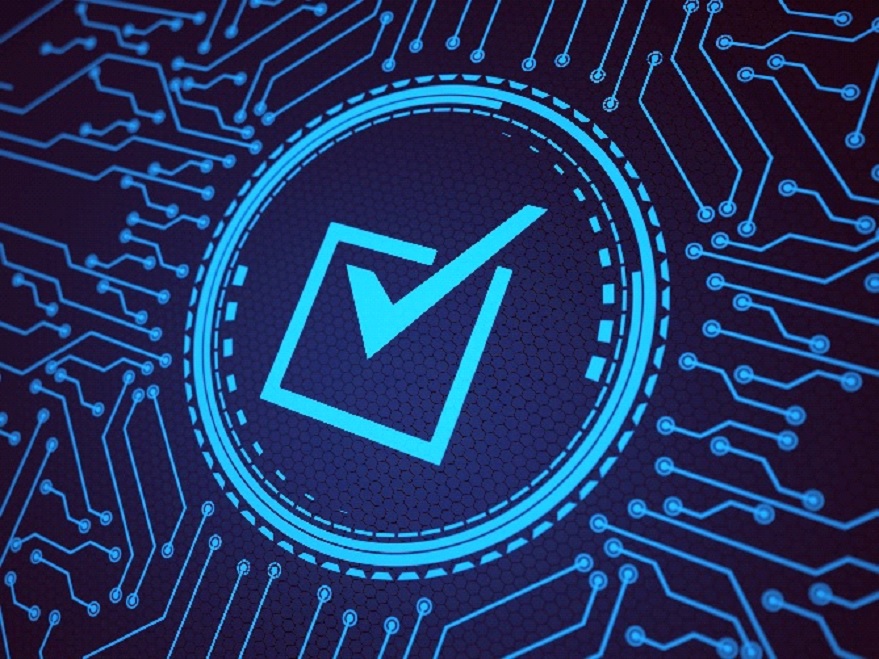One of the common pitfalls a company might fall into is assuming that its cybersecurity solutions are maintained and managed via standard risk assessments.
This assumption can cause significant organizational issues, as the rapid development of technology and its use in business has far surpassed the remit of any general assessment.
In this blog, we’re going to cover the steps necessary to create an in-depth, wide-ranging security risk assessment unique to your company.
What is a Self-Audit and Why is it Necessary?
A cybersecurity assessment is an absolutely crucial part of determining how and why you use certain technology within your business. This is because it allows you to create goals and parameters which give you a chance to:
- Set Security Standards – Your self-audit will enable you to decide what your security principles are and how they will be communicated with everyone within the organization.
- Follow Rules and Regulation – Your audit will show you whether your cyber solutions are adhering to not only your own standards, but any obligatory external regulations.
- Plug Gaps – An in-depth audit will pinpoint any gaps in your security measures. You’ll be able to rectify anything that is needed to improve your current system and identify how your existing solutions are performing.
Self-audits are useful if you’re looking to understand whether your current cyberinfrastructure is working efficiently, or if you’re making preparations for a professional external audit.
As reported by Forbes.com, the first six months of 2019 saw upwards of 3,800 publicly disclosed breaches exposing 4.1 billion compromised records. By ensuring you undertake a full-scale cybersecurity audit at least once every quarter, you can stay in line with the latest cybersecurity technology to help prevent this from happening to you.
How to Perform a Thorough Cybersecurity Audit: External vs. Internal
There a few different ways to collate the data you require, but you’ll first need to decide whether you wish to do an internal or external audit.
External auditors are able to bring a wide range of knowledge and experience to the table, which enables them to identify security flaws and breaches in your cyberinfrastructure.
The biggest problem, though, is the fact that external auditors are pricey, and identifying a professional with the requisite qualifications and expertise is by no means a simple task.
The success of your audit will rely heavily on how well you’re able to communicate with your auditor. If your auditor isn’t given access to the kinds of data they need promptly, it will take longer, which unnecessarily increases costs and could produce incorrect results.
All of these factors make external audits more of a luxury than a necessity, which is why they are more commonly seen as an ongoing expense by large corporations.
Alternatively, internal audits, are a much more realistic option for most small to medium business owners. Since you’re already aware of company processes, you can collect the data you need without disturbing working patterns; something an external professional would need to find out before they’re able to undertake the work.
5 Questions to Include in Your Cybersecurity Audit
Although an internal audit may sound labor intensive and complex, it’s actually nothing more than establishing goals and KPIs and ensuring company policies are all aligned towards adhering to them. You can do this quite easily by answering the following questions:
- What Are Our Security Parameters?
In line with GDPR practices, any company that deals with EU citizens are legally required to appoint a Data Protection Officer who is responsible for monitoring all external and internal data. Whomever you select to take up this role should play a central role in your audit.
Your first task will be to decide what could pose a risk to your day-to-day operations; which means you’ll need to create a list of your assets, which could be counted as any of the following:
- Computer equipment
- Sensitive information (both company and customer data)
- Anything crucial that requires time or money to rectify if it were to go wrong
Once you’ve highlighted what your assets are, you will need to decide, along with your DPO, how far your security parameters will stretch.
You can essentially separate these into two groups:
- Things included in the audit
- Items that won’t be included in the audit
The reasoning behind this is that it’s simply not feasible to audit everything, so you need to place your most valuable assets at the center of your audit and work outwards to determine what really is essential.
What Threats Do We Face?
Once you’ve decided on your most valuable assets, you must identify what poses a threat to them.
This is a critical step in the process, as you could be facing anything from sub-standard employee password protection and data breaches, all the way through to the threat of disasters such as fires and flooding.
Although it’s true to say that any and every threat should be considered in the audit, it’s also true that the list could be virtually endless since you’re never going to able to protect yourself from every conceivable threat. However, so long as you place that which is absolutely crucial to the day-to-day running of your business at the forefront, you’re taking all reasonable steps to shield your employees and your company from potential cyber threats.
We’ve listed some of the most common dangers below:
-
Employees
– A chain is only as strong as the weakest link, and if your employees aren’t acting as your first line of defence, it is enough to threaten the integrity of the entire infrastructure. Ask yourself: are my employees trained in cybersecurity? Could they identify suspicious activity and follow defined security protocols? -
Phishing
– Phishing attacks are one of the leading culprits when it comes to data breaches. Many phishing attempts are even able to bypass default security measures, which is why it’s so important that your employees are trained to spot this kind of activity. -
Inside Threats
- No-one wants to think that an internal member of staff would hurt their business, either accidentally or maliciously. Unfortunately, it does happen, and it’s a fairly common problem. -
Distributed Denial of Service Attacks -
A DDoS breach essentially attacks a target (commonly a webserver), overloads it, and prevents it from operating as it should. This is particularly the case with ecommerce websites. -
Vulnerable Passwords –
In 2018, 81% of data breaches were attributed to weak passwords. Weak or illegally acquired passwords are the most common technique hackers use to gain access to a network -
Malware –
Malware could represent a variety of different threats, such as trojan horses, spyware, worms, and the increasing danger of ransomware. -
Theft & Disaster –
While neither of these occurrences is likely, the consequences of not preparing for them could cost your business a considerable amount of money. -
Third-Party Devices –
If you allow your employees to connect their devices to the Wi-Fi or use of USB sticks, you could unwittingly weaken your security protocols.
Are Current Security Measures Working?
Once you’ve identified the threats you might face, you’ll need to sit down and assess whether your current security measures are up to the task of defending your cyberinfrastructure.
At this point, you’ll be assessing all of your security measures to pinpoint weaknesses, whether it’s the need to improve outdated security process, gaps in knowledge, or a lax approach to cybersecurity throughout your organization. This is one area where an external auditor could be particularly useful since there is no internal bias which could impact the finished audit.
Your security audit must bypass any predispositions you may have towards employees in specific roles or even your own performance. If there is someone more suited to a cybersecurity role, it’s important they are placed into that position to ensure ongoing protection.
How Do I Prioritize Risks?
Prioritizing the risks within your audit is perhaps the single most important step in the entire procedure.
First look at the list of potential threats we covered earlier, then compare any potential damage with the probability that this threat may materialize and assign a risk score to each.
For example, a fire has the potential to destroy your equipment and your premises, preventing day-to-day operations for an indeterminate period of time; this, therefore, should be considered "high risk." However, since it’s not as likely as, say, a malware attack, the risk score could be lowered.
When prioritizing to assess risk, it’s important to consider the following:
-
Recent Trends –
What methods are currently being used to access data? What threats are becoming increasingly dangerous? Are there any new advancements that could offer more protection? -
Industry Related Trends –
If your business is based in the medical or financial sector, you’re more likely to succumb to an attempted breach. What trends are prevalent in your industry and how could you be more proactive in protecting yourself against them? -
Historical Breaches –
Has your organization been hacked, or physically breached in the past? Do you have measures in place to prevent this from happening again? -
Legislation & Compliance –
Are you a private business or a public organization? Do you handle sensitive data on a daily basis? Who can access this data?
Answering these questions honestly is essential, as it will impact how you assign a threat score to each asset.
For example, if you’re a private business that handles financial information which can be accessed by numerous employees, the risk factor associated with this will already be high. But, if your security infrastructure has been breached in the past, the score you assign to this will be even higher.
How Can I Use the Results of the Audit?
The last part of the audit requires you to take your prioritized list of threats and decide how you’ll move forward with security measures to neutralize or eradicate the risk of threat.
Depending on your business, the industry you operate in, and the level of security you require, everyone’s list will look different. Below we’ve highlighted some of the most common security solutions to consider:
Training Workshops –
Even a small investment in security awareness and training can go a long way in reducing the impact of a cyberattack. Your employees are only human and will make mistakes, but by creating training workshops and regular refresher training, you can increase cybersecurity awareness and minimize errors.
Backups –
With the increasing reliance on technology in the workplace, many businesses are now entirely paperless, which passes the burden to online storage and backups. It’s thought that almost half of all small to medium-sized companies do not have a backup and data recovery plan, and its thought 60% of these businesses shut down within six months of their data being lost. Ensuring that you regularly back up data and isolate it from your main network means you’ll always find something to fall back on in times of crisis.
Email Protection –
As we’ve mentioned already, phishing attacks are on the rise, and this can be partly attributed to the fact that they are increasingly more sophisticated and challenging to spot. One click on a phishing email is all it takes for the perpetrator to gain access to your data. Spam filters are there to help weed out these kinds of emails, but employees trained to recognise them is far more effective.
Software Updates –
We’ve all been there: You turn on your computer only to discover that your machine is working its way through installing and updating software – while this can be irritating, it’s also incredibly important. These software updates often contain the latest security patches which are absolutely crucial to the security of the machine. This is why it’s so important to enforce manual updates in your security plan to ensure that all machines on your network are up to date.
Password Manager –
Human beings aren’t wired to remember hundreds of unique and complex passwords, which is why we tend to rely on variations of the same passwords over and over again. Investing in password management software means that unique and complicated passwords can be saved into the software and used when someone needs to login to something. This removes the risk presented by creating widely shared password spreadsheets and makes them far more difficult for someone to guess.
Network Monitoring –
Cybercriminals will need no second invitation to gain access to your network. To combat this, it’s worth doing some research into the best network monitoring software products which could alert you of any suspicious activity, such as access attempts from questionable sources.
Takeaways
In this blog, we’ve provided you with all the tools and know-how to complete your cybersecurity audit. However, it’s essential to remember that internal reviews like this should be ongoing and not done once and dismissed.
Your first audit will be helpful when establishing the benchmark for all future reviews, in that you can measure what has worked and what needs to be improved upon.
By continually updating your processes and investing in the latest technology, you have the opportunity to create a culture that really drives home the impact of cybersecurity and highlights the dangers of not having implemented appropriate safety measures.






